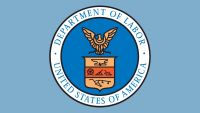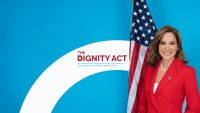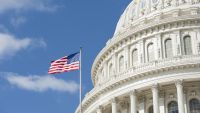Opportunity Knocks! How to Take Advantage of New Retirement Plan Legislation
As I write this August 2003 investment article we are on the edge of a stock market recovery after three very harsh years; three years in which most stock market investors lost money. Followers of my column in Masonry know that I am an advocate of defensive purchases of bonds and a believer that the "Fed" dictates some of what we as investors should do with interest rate decreases. Government, in the form of Congress, has also been busy influencing what we should do with some new legislation. Let's take a look at the landscape of what happened with some tax incentives and how they might impact your own situation and that of your employees.
First let's consider that many Masonry readers are small business owners who have not yet set up a retirement plan for themselves or their employees. The most prolific new plan for most small business owners is going to be the voluntary 401(k) Plan. Under the Economic Growth and Tax Reconciliation Act of 2001, for the first time, employees can contribute up to $12,000 to a voluntary 401(k) retirement plan without reference to how much income they made (except they need at least $12,000 if they contributed the maximum). The employer need not match or contribute anything to such a plan. Workers over 50 years of age are going to be able to contribute up to $14,000, with the benefit of a $2,000 catch up provision (which increases to $3,000 extra in 2006).
Voluntary participation in a 401(k) plan established by the employer gives employees an alternative to attempting to set aside income for retirement in an IRA, which is limited to less than 25 percent of the total contributions that can be made in an employer sponsored plan. Since "voluntary" imputes that employees decide how much of salary or wages are to be deferred up to the maximum permitted, the employer does not have to match or participate in contributions.
Funds invested can be placed in a brokerage account where the employee, hopefully with some professional advice, chooses his or her own investments. The point here is that you can help your employees by facilitating a retirement plan, which can be drawn up so that any expenses of administration are paid by plan-holders or you can pay these costs as a hard benefit to the employees. There are other plan options, so let's keep moving.
The typical employer is anxious to achieve low employee turnover, employees motivated to reduce controllable costs to increase profits and an employee attitude of general goodwill toward the employer. Retirement plans such as 401(k) Deferred Profit Sharing Plans allow the employer to make contributions to employee retirement plan assets on a discretionary basis, usually related to how much profit there is available to draw from. Often these existing plans have the owner of the business as the Trustee and the annual contributions from the business are zero. Employees, however, can direct the investment of their contributions, which are limited to 25 percent of gross pay up to $40,000 per year under the 2001 legislation. This is a significant increase from $25,000 and 15 percent of gross pay for highly paid professionals and business owners under the previous rules. The impact of this change for a profitable masonry owner (subject to other rules limiting contributions as they may relate to other employees) is that increasing salary to $160,000, in order to justify a $40,000 contribution, instead of paying corporate tax (40 percent over $50,000) and issuing dividends (15 percent taxable under new legislation), is another way of deploying some profits at the end of the year.
Another wonderful thing is that employers may offer more than one retirement plan to employees. Thus, employers may choose to set up the relatively simple voluntary 401(k) plan for employees and still have a deferred profit sharing plan in which some of the company profits are set aside tax free in an employee 401(k) plan for its employee members at the expense of the company but dependent on profits.
There is also the defined benefit retirement plan which can be set up for key executives and owners of a company allowing significant early contributions by the employer to set aside enough funds to pay executives compensation at 60 percent of their last five years of salary or total compensation, on retirement. Typically, complex rules apply to participation by rank and file employees that limit contributions to this group and/or limit the vesting of employer contributions. Employers who have not set up a plan for themselves and have few older employees and many younger employees will get a significant benefit from the tax deductions created by a defined benefit plan established for owners or key employees in their fifties and sixties who are able to fund such contributions, which are sometimes in the millions of dollars. Creating a loss carry back by forming a defined benefit pension plan can be an interesting tax recovery strategy provided the cash is available to meet the compulsory and defined annual funding costs of a defined benefit plan.
How to invest the deposits is an interesting challenge. Much has been made of the disaster created by Enron, when many of its employees had all their own 401(k) contributions in Enron stock and the company had been matching employee contributions of cash with Enron stock. Generally, a major problem in 401(k) investing is that rank and file employees do not get counseling on what to invest their savings in and end up with the worst choices, often because no choice at all gets them a money market investment. Today, at less than one percent per annum, money market investments may not be the best choice for someone younger trying to increase their 401(k) assets. One investment advisory company has tracked investment performance over the past 15 years to determine that, by investing 50 percent of assets in a S&P 500 Index Fund and 50 percent in a bond index fund, an average annual return of 10.96 percent could have been earned as compared to a 9.45 percent return if invested in a balanced portfolio of mutual funds.
With interest rates as low as they have ever been in the lives of most masonry business owners, the time is right to set up one or more of the retirement planning options. Remember: If you, like many masonry business owners, are facing a 40 percent tax on the next dollar of your income, by setting aside up to $40,000 per year, the government is going to let you invest this without taxing it now. Thus $16,000 or 40 percent of a maximum contribution represents tax dollars which would have been gone had you failed to exercise the right you have to defer tax on these dollars and put them to work. Thus, you technically enjoy a $16,000 gain on your otherwise taxed income, immediately, if you set up a plan and make the maximum contribution.
If you invest in income earning U.S. Treasury zero-coupon bonds, or STRIPS, maturing in 2019, you are guaranteed to double your contribution to $80,000 in that period. The $80,000 represents a return of $56,000 on your out of pocket cost, $24,000, over a period of approximately 16 years. This is an annual average return of $3,500 on a risk of $24,000, a simple return of 14.583 percent per annum. Thus, using the money you might otherwise pay to income taxes is a good way to get a jump on investment returns with little or no market risk.
Many investment professionals believe that a diversified portfolio consistent with modern portfolio management theory should be spread across 60 asset classes and depending on interest rate action and other economic circumstances slanted more in the direction of stocks or bonds as economic policies change. Those with significant 401(k) assets can retain professional management for one percent or so of assets to manage the investment choices in these asset classes on a direct "hands on" basis. Generally, for our own clients, we seek a minimum investment of $100,000 for hands on supervision, in order to earn enough on assets to justify the time and expense of dealing with the clients and the assets. Presently our combination of income earning dividend increasing portfolio positions is yielding an average of five percent income and has appreciated for the last several months as investors have migrated to income earning holdings from value oriented stock positions. Some of the large brokerage companies offer diversified portfolio structures for 401(k) investors that can offer a diversification across asset classes with management on a group basis.
As you choose whom to have your 401(k) assets deployed with, it is important to make sure that if you allow your employees to direct how their assets are invested that you educate them on some of the ideas I have shared in this article. This protects the company against any potential liability to its employees for not getting them good advice on how to invest their retirement plan assets. Congress set up some limits on how much employer stock can be invested in an employee's retirement plan for this very reason.
While some employees will not need or want a retirement plan, these investments are a great tax deferral vehicle for owners and key employees, which will help your business in more than one way. Get one going this year, one way or the other.
About the Author
Wayne F. Currie is Chairman and CEO of Incentive Capital Management, Inc. He has been a financial planner and investment advisor since 1970.


















